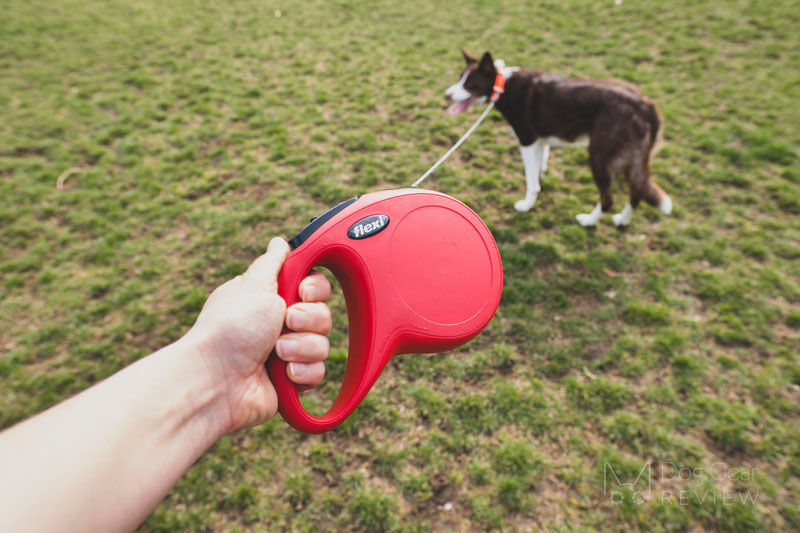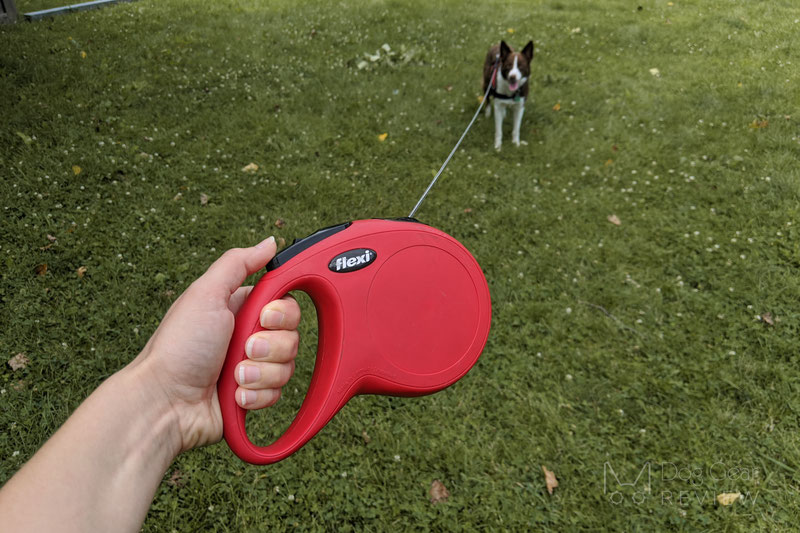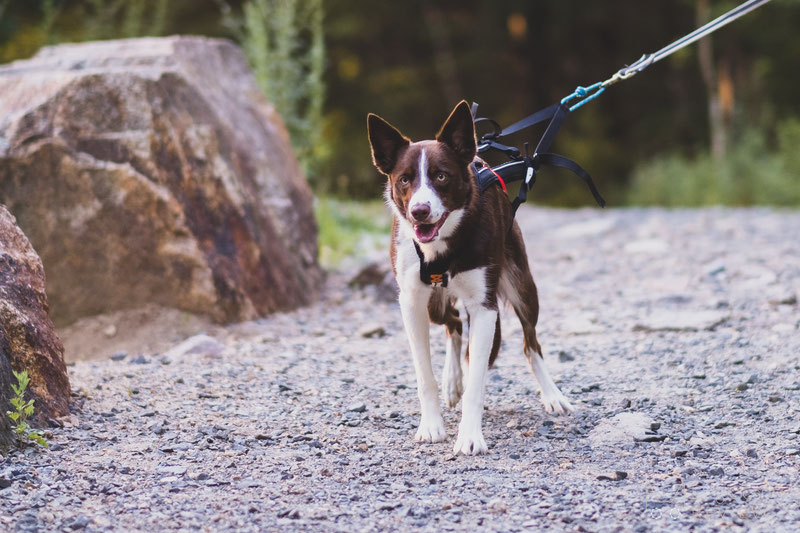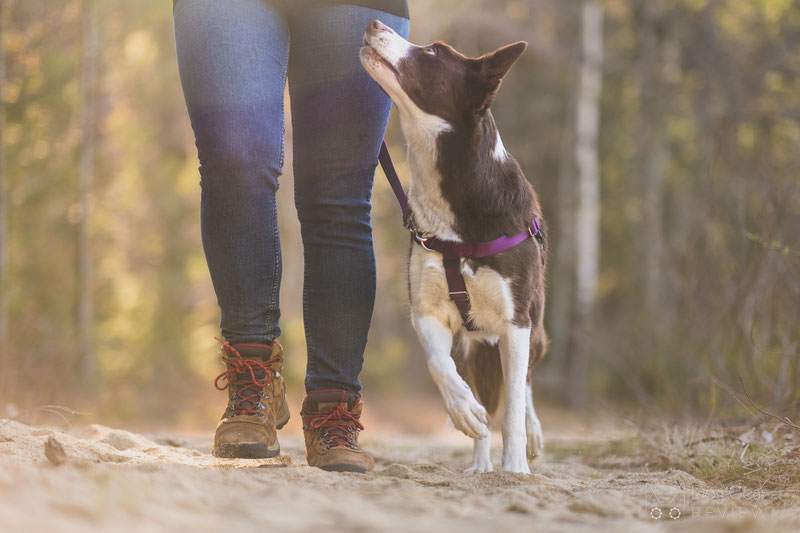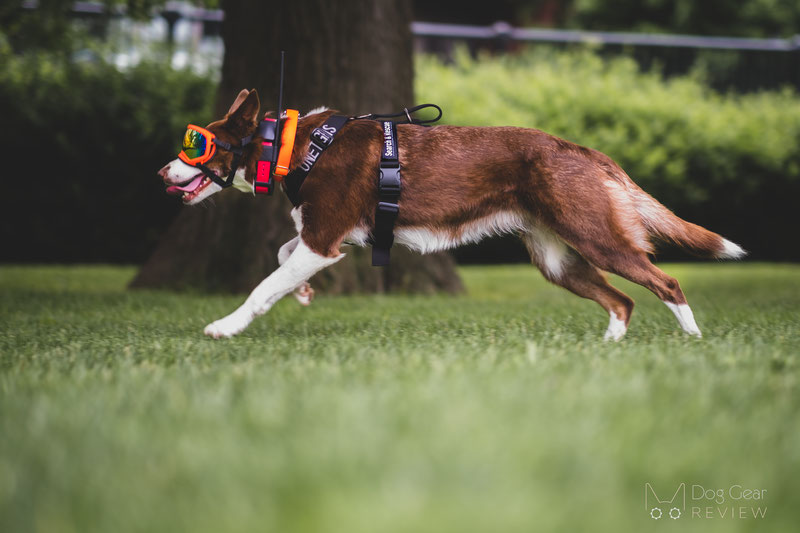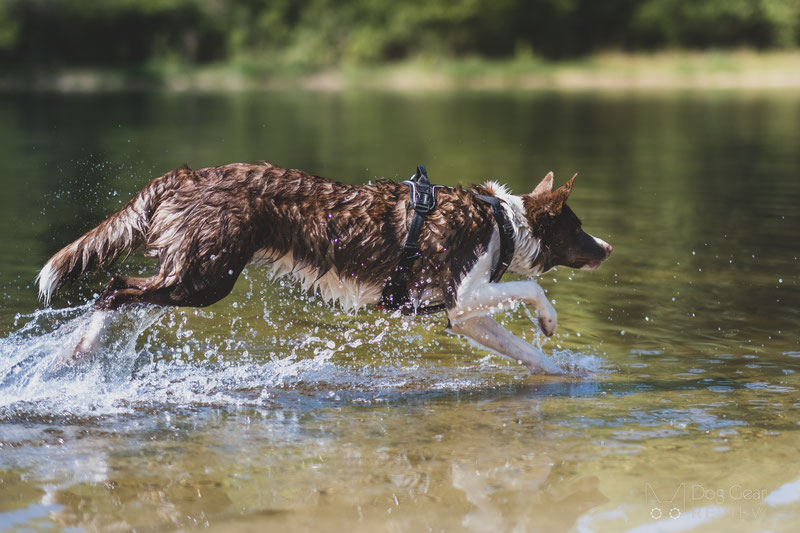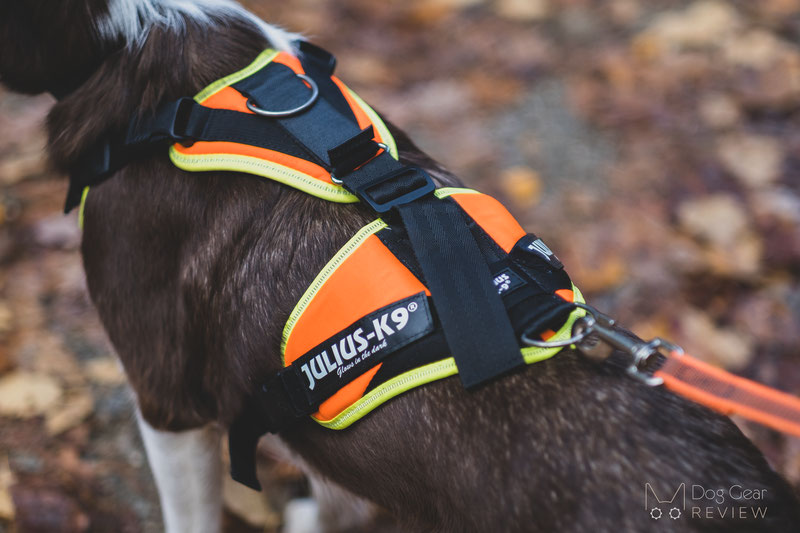Manfred Bogdahn invented the Flexi leash in 1972. He was looking for a solution for providing more freedom to dogs while still having some control over them. It was used happily by thousands of people worldwide for decades, but over the last 5(ish) years, there is a strong push back in online communities, saying it is not a responsible way to walk the dog.
Let’s look into both sides a little more!
When retractable leashes are a great choice
These leashes provide exactly what Manfred Bogdahn had in mind: give a little more freedom while still having some control. Using these leashes can be great when teaching recall, retrieve, stay, or other commands. They are also ideal in an on-leash area when a dog already has good leash manners and is under voice control. They can also give more freedom to deaf dogs or dogs after surgery who are not supposed to run around but can start exercising.
A retractable leash is also suitable for potty breaks in an area with some dangers around - like stopping next to a highway while traveling when you want to give more room for the dog to stretch their legs. A similar risk could be if there are coyotes, skunks, etc., around someones home, so they want to limit the dog’s freedom for the bathroom breaks at night.
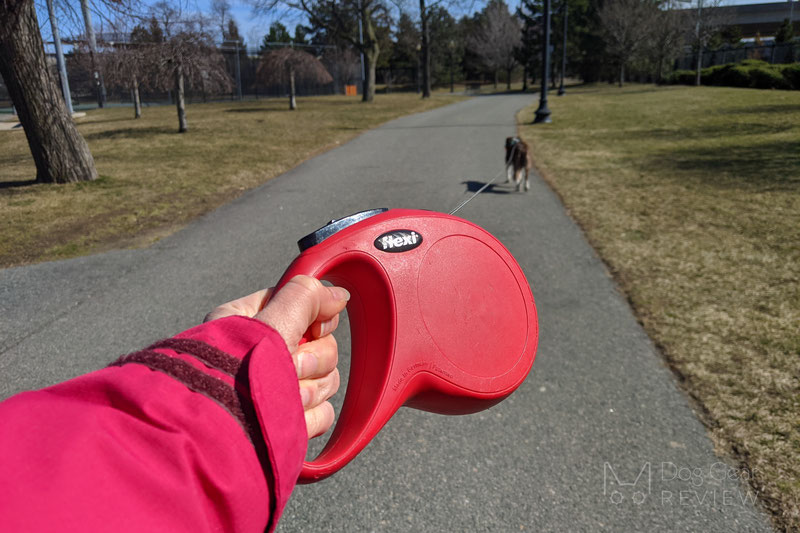
When retractable leashes are dangerous
Both veterinaries and human doctors can confirm that there are many injuries resulting from using retractable leashes. The most common issue is that someone’s leg gets wrapped in the leash while the dog is running around and the thin leash can surprisingly easily burn and even cut the skin when sliding on it. If dogs are allowed to play with other dogs while on a retractable leash, both dogs have an easy time getting tangled and eventually injured when one of them starts running, yanking the leash wrapped around them. One might think these are only minor injuries, but they can be severe and very painful. In general, using these leashes is not ideal in any busy location where there are dogs, people, bikes around because any of these could get tangled in them, or a situation could quickly arise when you would want to have the dog close for better control.
Another risk is if the dog starts running at full speed and the harness or collar injurs them when they sudden reach the end of the leash. Having the leash attached to the harness is much better in this situation, but it can still cause damage when stopping a running dog suddenly.
I also see many people walking dogs on the sidewalk of a busy road with a long leash far ahead of them. Dogs quickly learn that they are not supposed to step on the road, but if something happens (like someone suddenly stepping out from a building or a car honking, etc.), they can get scared and jump on the road. When they are so far ahead, there is no way to pull them back from the road quickly. There is also always some chance that the leash would malfunction if the dog suddenly pulls on it, and the button would fail to stop the dog, or even the rope could break.
As a general guideline, Flexis are not great if the dog is constantly at the end of it, pulling in one way or another. I wouldn’t use it as a main leash for a puppy either because my experience is that they have a much harder time understanding leash rules since the end of the leash is always at a different distance. Flexis also maintain some light leash pressure which might make it harder to teach loose leash walking later.
Lastly, many feel that it’s easier to hold onto the Flexi leash handle than a regular leash, but this is not true - especially if there is a big, strong dog pulling at the end of the leash. When walking the dog on a retractable leash, most people get comfortable and will not maintain a firm grip on the handle. When the dog suddenly pulls on the leash, they easily drop the handle, which usually scares the dog, who is now running away with the handle loudly flapping behind them - scaring them even more.
So, should we ditch retractable leashes?
If you just quickly look at the pro and con list above, it’s clear that we lengthly discussed the cons, which might make it look that all together, we shouldn’t use retractable leashes.
We tend to look for solutions that are (at least) 2 in 1 - we want to be able to have complete control over the dog but also give them some freedom. The retractable leash seems to offer just that, but there is always a trade-off with a multifunctional tool. The problem is that it will never provide the same level of safety and control as a regular flat leash would. In a busy environment, a Flexi leash will probably cause way more problems than it can solve. For an untrained dog without control, defaulting to retractable leash walks will make everything way more chaotic and dangerous for everyone involved, which doesn’t worth giving a little more room to the dog to run and sniff around.
On the other hand, if you have a well-trained dog, a retractable leash can be a fantastic tool to utilize. It is also great for walks and training on open, quiet areas where no one else can get tangled in the leash, and you see if another person or dog is approaching. I also find that more people are open to obeying the leash laws if they feel their dog still gets some freedom on a long leash vs. when they have to stick to a short leash.
We use our Flexi daily because most of the green spaces around us require dogs to be leashed. Mia would still stay around me off-leash, but we respect the rules and leash up. While it is not comfortable, I always carry two leashes with me and never use the Flexi to walk to the park or back home. I use a shorter flat leash on Mia’s collar for walking from A to B, which signals her that it is a structured walk. For me, the regular flat leash is easier to handle and more secure to hold onto if Mia would get scared of something since the constructions around us provide plenty of sudden and loud noises. When we reach the on-leash area where I want to give her some downtime, I attach the Flexi to her harness so she knows it’s her time to sniff around, play, etc.
I am not suggesting that this is what everyone should do since everyone’s situation is unique. I only mentioned it as an example of how two leashes have a very different use case, and there is no need to pick only one. Carrying two leashes isn’t actually as painful as one might think and can worth it. When we lived farther away from cities, I used the Flexi more often since usually no one was around, and we had quiet walks on way more green areas. In this case, reverting to a retractable leash with a trained dog doesn’t really have trade-offs compared to a busy city setting. As a note on this topic, many Flexi leashes have a small handle to hold onto and use as a short leash. I utilize this many times if I want to have Mia close to me while we pass someone. It adds a bit extra security that I can hold onto the actual leash, and the button on the handle is just my backup.

How about Long Leads/Drag Lines vs. Flexis?
As the popularity of retractable leashes started to decline, the long leashes seemed to increase. These are looong flat leashes; they can even be 40-50 feet long. They can be made of textile, Biothane, or some thinner rope material to keep the weight reasonable.
Long leads also have their purpose; for example, they are great for dogs who are somewhat good off-leash but still don’t have a solid recall. It’s much easier to catch a dog running around if you can step on the long lead they are dragging behind them.
At the same time, they are significantly harder to use as an actual leash in a busy environment unless the owner is very consistent with constantly adjusting the lengths. With a retractable leash, the dog can be stopped where they are at the moment; with a long leash; there is usually some slack that first needs to be reeled back to actually “get to” the dog. By the time I reel in the slack, the dog might have already eaten something they were not supposed to or jumped on a dog to say hi who doesn’t want them to say hi. This is more of a personal preference, and it comes down to what works for your dog, you, and your environment.
One of the big pros for the long leads is that having a wider leash vs. a small rope used for most flexi leads is much safer in general, but these days many retractable leashes come in a “tape” version as well. This makes the flexi safer, but the leash handle will also be significantly bigger and heavier. Many go with a long lead vs. the Flexi because it is much less likely (although still possible) that a flat leash would break.
How to make using a retractable leash or long lead safer?
If you go with a retractable leash, be sure to buy one that can handle the weight of your dog. Also, go with bigger, well-known brands over cheap copycats that tend to fail more often. There can be a significant price difference, but it worth it for a safer product. Don’t forget to regularly pull out the leash’s full lengths at home to check if there is any tear on the tape/rope.
If you prefer a long line, be sure that the carabiner can actually handle your dog’s weight if you have to stop them suddenly. Many of these leashes are thinner and come with a fancy-looking, small carabiner that might not be sturdy enough for a bigger dog. Also, keep in mind that sand and dirt will slowly damage the load-bearing yarns, and the leash will eventually snap. For this reason, using a Biothane material as a dragline might be a much safer choice than rope or other fabric material.
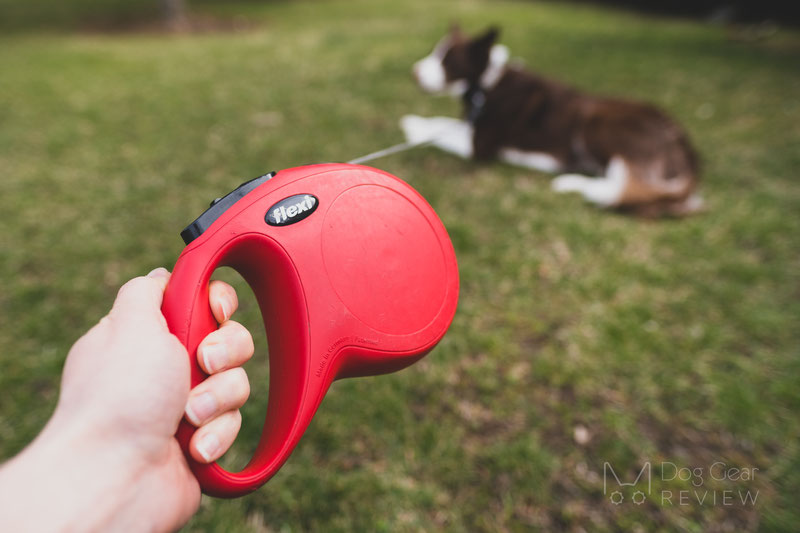
Which leash for which situation?
While every dog and every situation is different, here is a simplified guide for an ideal use case for each of these options:
Regular leash (4-6-8 foot(ish) flat leash): great for training, walk a dog who is in training and needs control, and walking in busy areas.
Flexi/retractable leashes are great for dogs who generally behave just need some extra control. Also, for on-leash areas for a dog who can walk nicely and listens to verbal cues. Good for giving more freedom to deaf dogs or dogs who recently went through surgery.
Long lead: great as a drag leash so the somewhat trained dog can freely run off-leash. Some prefer to use them for regulars walks as well, adjusting the lengths as needed.
Summary
Like with many other widely debated dog products, the issue here isn’t with the product but the way people use them. Unfortunately, most people using them have dogs who are not good candidates for being on a retractable leash. Living in a busy area, I mainly see people using Flexis who otherwise have no control over their dogs, and they feel keeping them on the longer leash bypasses the need for training.
To summarize, retractable leashes are great tools for specific situations. Take a second to think through how you walk, the potential risks on your outings, and pick the leash that works for your plans for that day. It is not a black and white topic where you either have to love them or never use them ;)
Ps.: this article was not sponsored by Flexi or any other retractable leash brand; I purchased ours well before Dog Gear Review’s idea came to me and wrote this article because I think this topic is worth discussing.
